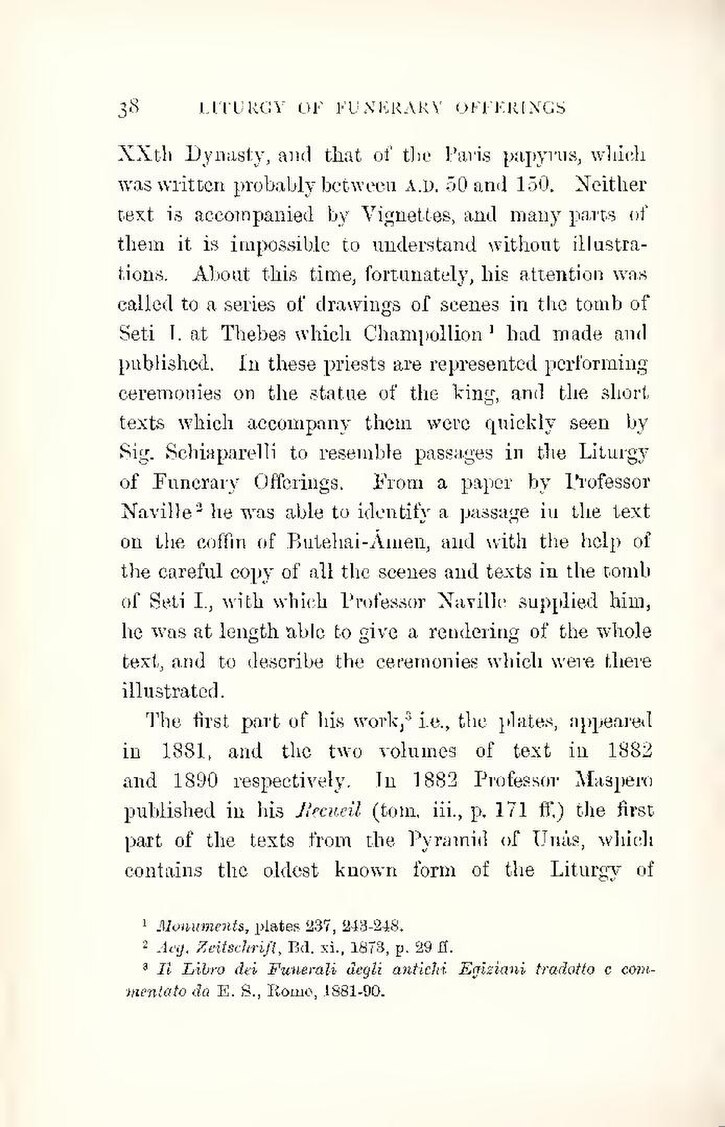XXth Dynasty, and that of the Paris papyrus, which was written probably between a.d. 50 and 150. Neither text is accompanied by Vignettes, and many parts of them it is impossible to understand without illustrations. About this time, fortunately, his attention was called to a series of drawings of scenes in the tomb of Seti I. at Thebes which Champollion[1] had made and published. In these priests are represented performing ceremonies on the statue of the king, and the short texts which accompany them were quickly seen by Sig. Schiaparelli to resemble passages in the Liturgy of Funerary Offerings. From a paper by Professor Naville[2] he was able to identify a passage in the text on the coffin of Butehai-Ȧmen, and with the help of the careful copy of all the scenes and texts in the tomb of Seti I., with which Professor Naville supplied him, he was at length able to give a rendering of the whole text, and to describe the ceremonies which were there illustrated.
The first part of his work,[3] i.e., the plates, appeared in 1881, and the two volumes of text in 1882 and 1890 respectively. In 1882 Professor Maspero publiched in his Reveil (tom. iii., p. 171 ff.) the first parts of the texts from the Pyramid of Unȧs, which contains the oldest known form of the Liturgy of
